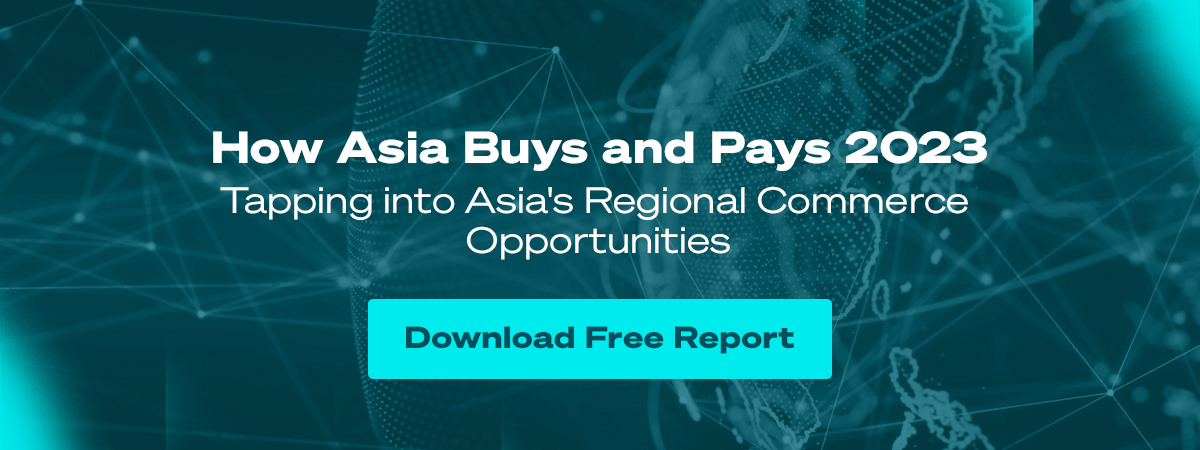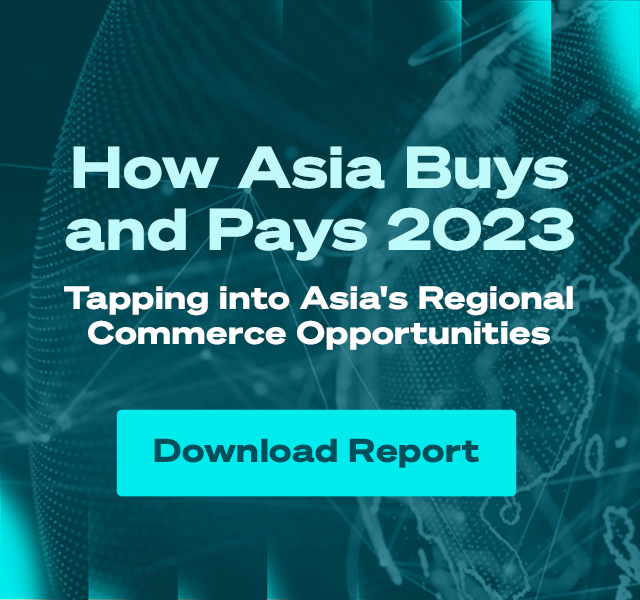
Payments Powerhouses: Building Ecosystems to Drive User Adoption with GCash's Ferdie Perez
In this instalment of Payments Powerhouses, we chat with Ferdie Perez, Head of Commercial Product at GCash, about the growth of digital payments in the Philippines, and what it means to build financial products that serve the everyday needs of users around the world.


Welcome to Payments Powerhouses, Ferdie. Could you tell us about your career journey and how you landed at GCash?
Ferdie: I've been at GCash for almost five years now, which is rather long, considering our massive growth has only happened in the past two to three years. The team has grown fast as we expanded, so most of them are new. Over the years, I've seen the company go through various transitions, and I’m glad to say that GCash is in a good place.
Before GCash, I was mostly in tech companies with spells at Agoda and OLX Group. I also previously worked at BPI Globe BanKO, a mobile phone-based savings bank that’s part of the same group as Mynt, so when I circled back to join GCash, I met up with some familiar faces.
Could you walk us through the GCash story and what factors contributed to its success?
It’s always been about being purpose-driven in what we do – it starts with understanding what our customers need right from the beginning and focusing on that. We develop and use digital tools such as our eKYC [Electronic Know Your Customer] platform to make it easy for users to open an account. Subsequently, users can transfer funds to their wallets at any of the 350,000 brick-and-mortar points and through the 50 banks we’re connected to.
When it comes to use cases, it’s about ubiquity: we want to make GCash available anywhere, be it at a mom-and-pop store, a restaurant, a shopping centre, or online shopping sites. Next, we need to think about engagement: once we have people on board, we want them to continue using our platform, which is why user experience has always been the main focus.
When the pandemic happened, GCash was there for the Filipino people; it was one of the few things that actually worked. People couldn't go out to pay their bills, so they had no choice but to use online platforms, and GCash was the preferred method. In doing so, they also discovered more use cases through GCash. For example, the government used GCash to distribute billions of pesos to Filipinos who needed help. Before, it would take months to do that — GCash took days. So through GCash, people were able to receive much-needed aid from the government.
Additionally, many of the businesses that sprung up during the lockdown started using GCash. When people lost their jobs or wanted extra income, a lot of Filipinos turned to entrepreneurship, and GCash was the main method that supported these ventures. For social enterprises, GCash became the preferred way to facilitate payments. Since social gatherings weren't allowed, we improved our peer-to-peer functionality to let people send money, gifts, and even video greetings through GCash.
In terms of the stability and scalability of our systems, we were fortunate to have migrated to a new platform right before the pandemic hit. So regardless of how much the traffic increased, we could support that and grow seamlessly.
It's really about understanding what people need at any point in time and finding more ways to meet those needs.
What challenges did GCash initially face, and how did you overcome them?
You can't change behaviour overnight, so education and awareness are key to highlighting the importance and benefits of digital money. We've invested a lot to build financial literacy in the Philippines. The government had a target of having 20% of all transactions done via digital money by 2020. With e-wallets, specifically GCash, we've gone beyond that target, hitting close to 50%.
As we expand beyond the metropolitan areas, infrastructure still poses a challenge — this is where ecosystem development comes in, and we're still working on it. You need to find a reason for people to use your wallet.
Currently, we're trying to expand through more non-traditional channels: we call them sari-sari stores, which make up more than 250,000 cash-in points. The idea is to make it easy and convenient for people to put money in their wallets and have merchants accept GCash. So, for example, we want to enable users to pay for their local utilities in a cheaper and more convenient way.
GCash is giving cash a run for its money, so to speak. Having started with money transfers, what are some other products GCash hopes to expand to, and what consumer business needs will they serve?
The goal has always been to make GCash relevant every day. Looking at where people spend — from the perspective of Maslow's hierarchy of needs — people spend on daily necessities: food, transportation, and utilities. So we want to make GCash available to all merchants in these areas.
Going beyond fulfilling basic needs, it becomes more about lifestyle, so GCash has been developing and expanding the number of merchants we support in that area. Essentially, we're creating our own lifestyle proposition through GLife, adding more use cases on the platform whereby people can get food delivered, shop, acquire services, etc.
Upwards from that, when people have more disposable income, that's where financial services come in. With our promotion and availability of formal financial services, one out of five bank accounts are now opened via GCash, enabling savings. We've also entered into insurance, as well as investments and lending; in all these areas we've entered, GCash has gained the largest market share.
In the Philippines, we have ‘peer-to-peer lending’, which we call “5-6“ lending — it's unsecured, uncollateralised, and comes with a high 20% interest rate. People resort to “5-6” because they don't have the necessary tools or meet the requirements to access formal loans from banks. With GCash, we want to make it easy for people to access legitimate, formal lending, and we only require an ID to open an account.
We facilitate lending based on our scoring system, GScore, that's solely based on user behaviour. The more you use GCash, the more you become part of the ecosystem; the higher your score, the more funds are available. We also have cash loans and our version of BNPL called GGives.
This scoring system can be used across the GCash ecosystem. Can it be used outside of that as well?
One thing that we're consciously trying to do is to leverage all the tools that we have as a platform. Aside from credit scores, we also productise our KYC platform, which we call GConnect. Many businesses need KYC, and we can connect that with different platforms so they don't need to do it themselves.
GCash is probably one of the most data-rich companies in the country — we have access to users’ identities, how much they spend, where they spend, etc. In terms of profiling, I think we have more than 50 user profiles, which makes it very relevant for companies to advertise to our user base, as we’re able to cater to different personas based on our data.
Speaking of data, in light of evolving fraud threats, what measures has GCash put in place to address consumers’ concerns about data privacy and security?
Oh, that's very important to us. As a financial product, trust is key. We've instituted a lot of security measures for our digital KYC platform. Recently, there was a move to remove links in SMS messages, and we were one of the first to comply. We also mask the names of users when they send money, and we acted on that swiftly to address concerns about giving out personal details. We are constantly on the lookout, tweaking and optimising where possible because trust and safety are very important to us.
I noticed an interesting feature called GForest. What is it, and what is its intention?
GForest is part of an engagement play — when you use any of the services on the GCash app, you earn points, and when you accumulate sufficient points, you'll be able to plant a real tree. We worked with a legitimate third party that computes the actual carbon footprint you save when you transact using GCash. For example, when you make a bill payment, you'd earn 253 green points. While it's about engagement, it's also about sustainability, and we want to do our part in that area.
Looking ahead, are there any plans to expand GCash beyond the Philippines?
An international play is a key focus for us. When we talk about finance for all in the Philippines, we don't just refer to Filipinos within the Philippines; we also cater to the 10 million Filipinos in other countries. The first case for them would be international remittance; more than 30% of Filipinos overseas send money back to the Philippines via GCash.
Recently, we've also opened up cross-border payments. In Singapore, you can now scan a QR code and pay via GCash. We now have this capability in Singapore, Korea, Japan, Malaysia, and soon in European and other countries. It comes back to finding ways to make GCash relevant to all Filipinos, whether in the Philippines or outside of the Philippines.
Are there any new products in the pipeline?
We're always trying to launch new products to be more relevant to users and the market. One thing that we announced recently is our entry into stocks. Previously, when we launched GInvest, we made investing accessible and easy for people by making it relatable for them. The way we communicated that was for the price of a milk tea, you could have a share of Google. It's about going beyond their daily needs and allowing them to start participating in these things if they have more disposable income. So it’s about completing all the different financial services from investment, savings, insurance, loans, and even securities.
Is GCash also involved with cryptocurrencies or CBDCs?
There are discussions around that. We need to educate people on cryptocurrency, why people should enter it, and the risks involved. The Philippines is one of the biggest markets for NFTs, primarily because of the popularity of blockchain-based, play-to-earn games like Axie Infinity. We want to continuously support that as long as we can make people aware of the benefits and risks of those platforms. With crypto, in general, it's about finding the utility and the use case of the tokens.
Is the Philippines on its way to becoming fully cashless?
The growth rate and the penetration rate of mobile money and digital money have been really strong. The adoption rate in the past two years of digital money has been the biggest jump since 2015.
But for us to go fully digital, much more work must be done. And that's why we keep launching new services, launching products, educating the market, going outside the metros, going to the provinces, working on international access, and going into new businesses in the B2B space. We need to always be on the lookout for new frontiers and areas that we haven't ventured into because that's the only way to get to that 100% goal.
On a personal note, what's the most unexpected transaction you've made using GCash?
So, during the pandemic, a lot of people were using GCash for peer-to-peer transactions, and a new trend emerged when people started growing and buying trees — we called these home gardening enthusiasts “plantitos and plantitas”. I was keen to show my support and used GCash to purchase a tree from someone in a different province, since the seller didn't have a bank account.
. . .
Payments Powerhouses is a monthly editorial series interviewing the movers and shakers of the payments and wider fintech industry in Southeast Asia and beyond. If you’d like to be featured on Payments Powerhouses, reach out to us here.

